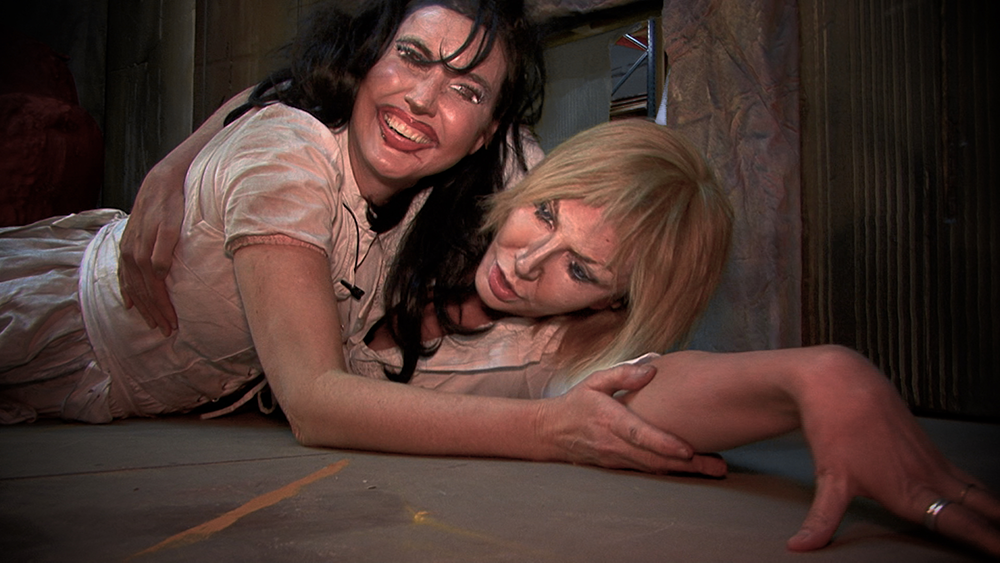The lighting is low. The furniture and wallpaper appear disheveled. It soon becomes clear that everything is dilapidated; floor cushions are deformed, lumpy and discolored. The couch is disproportionate. It faces a scarred wall where instead of a fireplace there is a pile of disparate furniture legs. To the left is a large cone that sags like a battered wizard’s cap and from behind the wall voices emerge from a film: a woman or women talking to themselves about a place described in detail that reveals it as equally rundown.
In one room there are very large drawings on irregular paper surfaces that appear to have been both drawn and written on from every imaginable position so that the vortex literally spins a viewer’s head. The fragments of writing range from descriptions of art processes and theory to more mundane or cryptic phrases that might derive from the everyday. The most urgent message is how these stream-of-consciousness patterns are layered and built up on one another, crisscrossing in an irreconcilable jumble of thoughts.
On the wall leading up the stairs, there are a group of works that probably best fit the definition of painting although they are explicitly about layering with significant low relief build ups. In the series, Portrait (Vain German) 2020-21, the color palette is a mix between bright acidic colors and very murky overlays, as if the different strata were battling with one another to be seen through a muddied yet semitransparent surface. There is a mix of micro-textural glittering and colored elements that float within the buildup along with larger swaths of paint or resin. It would be extremely difficult to see the complexity of this inter-relationship other than in person.

Kaari Upson, Alex’s House, 2019 (video still). HD video, color, with sound, 5:46 min. One of three videos in the installation Kris’s Dollhouse (2017-2019). © The Art Trust created under Kaari Upson Trust. Courtesy of Sprüth Magers
Upstairs there are paintings which have an equal urgency but are not as heavily layered. The rush in which they communicate the various intersections and superimpositions of images and patterns may not necessarily be traced to the artist’s mode of physically working but certainly add up in a viewer’s perception. Patterns do emerge in which there are fragments of clothing and facial features, hands and feet. They are not in a comfortable relationship, either with themselves or with the other marks that careen across those surfaces. There appears to be a kind of ongoing and unresolvable conflict being enacted.
Nearby are two small cast figures of a homunculus who is dressed in jeans and a gingham pattern shirt. The use of gingham becomes clear in its multiple deployment of crosshatching and as a kind of autobiographical impulse, like a uniform. This creature is either flattened face-first against a column or lying face-down on a table. Small liquor bottles sprout out of the spine. The sense of things being done in a kind of controlled disarray is omnipresent and overall, and there is an overall acute sense of melancholy. The combination of urgency and poignancy make Kaari Upson’s posthumous survey “never, never ever, never in my life, never in all my born days, never in all my life, never” both difficult to absorb yet very compelling to experience.


